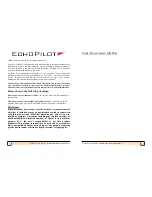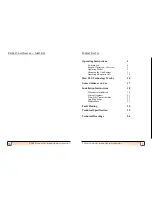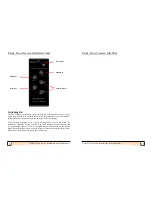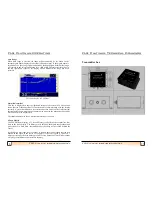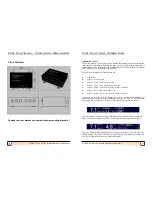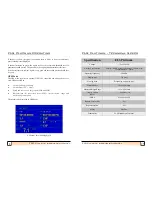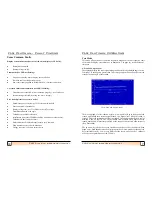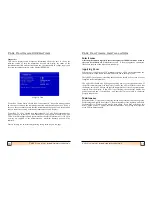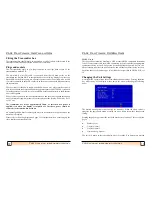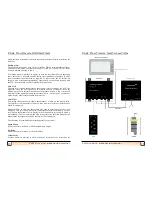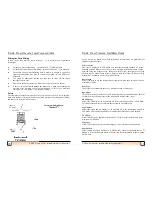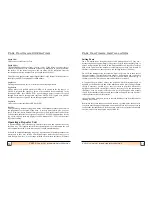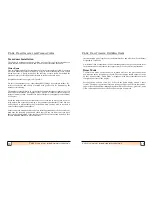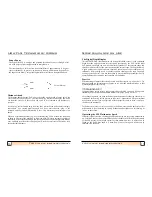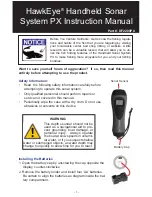
16
FLS
Platinum
Instruction Manual
How FLS Technology Works
Sonar Beam
The EchoPilot FLS is a unique and patented invention. It can see through a full
arc of 90 degrees, from straight ahead to straight down.
The transducer has a fairly narrow horizontal beam of approximately 15 degrees
(port to starboard). In practice, as sensitivity reduces with distance (especially at
the edges of the beam), the polar diagram looks more like an elongated balloon.
Distance Ahead
The distance ahead that the FLS can see depends on the depth of water below the
vessel, and the laws of physics. The transmit
‘
ping
’
radiates at all angles down and
out from the vessel, hits the sea bed and some of it is returned to the transducer
’
s
receiver.
As the
‘
ping
’
travels further away from the boat, it hits the sea bed at an increasingly
acute angle. At a certain point the angle will be so acute that the
‘
ping
’
is not
returned, and the sea bed information is lost
-
this determines the maximum view
ahead.
When on a flat muddy bottom (e.g. river or estuary) the FLS will show the seabed up
to three to five times the depth away from the boat. This ratio increases to eight to
nine times if the seabed shoals upward. Rocky bottoms are better targets than muddy
ones, and hard vertical surfaces like quay walls, rocks or coral reefs will often be seen
at considerable distances.
Forward Beam
17
FLS Platinum Instruction Manual
Some Guidance on Use
The Digital Depth Display
This ADDITIONAL information (in the bottom left
-
hand corner) is the calculated
depth from the angle data that is received and processed by the FLS. Unlike older
FLS models, the depth can now be calculated regardless of the selected range and
therefore can be useful for the user in selecting the correct range. The depth relies on
a good quality sonar signal and care should be taken in poor sonar conditions (e.g.
turbulence from passing boats or another sounder running at the same frequency
causing excessive noise). Care has been taken to prevent false depth readings in noisy
sonar conditions but cannot be guaranteed in all conditions.
Practice
When learning to interpret the screen practise with clear targets, e.g. a quay wall. Try
moving around an obstruction very gently to see what the maximum range is that
different targets become visible.
!!!!! WARNING !!!!!
If approaching a target select a range longer than you think you need. Most people
(including us!) seriously underestimate distances to quays, buoys, walls etc.
Note that going astern can push turbulence past the transducer reducing sensitivity or
sometimes obliterating all the picture so take care! Manoeuvre with the minimum
use of astern (reverse) power, especially with the propeller (on twin screw vessels) on
the side of the transducer.
Turbulence from other vessels, especially in shallow water can also adversely affect
performance. Algae (normally in spring), Plankton and pollution can all show up as
‘
noise
’
on the screen.
Operating the FLS Platinum at Speed
Ultrasonic signals travel well through solids and liquids but are greatly attenuated in
air. It follows that a stream of turbulence and air bubbles will limit the performance
of the FLS system, or any depth system for that matter. However, if a place can be
found on the hull where there is a clear flow of water, then good results can be
obtained even at speed.

